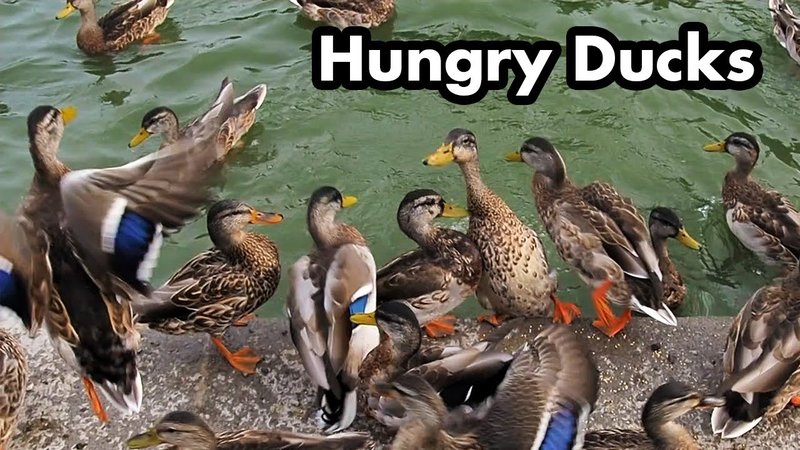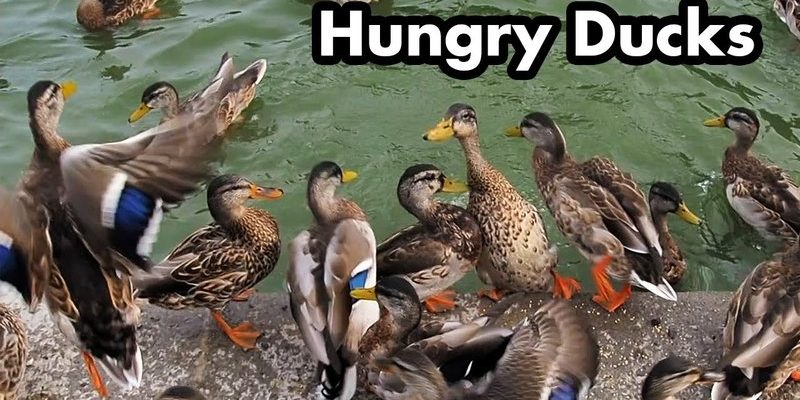
Understanding these vocalizations isn’t just a fun fact; it can deepen your appreciation for these fascinating creatures. Whether you’re a birdwatcher, a nature enthusiast, or just curious about wildlife, knowing what these sounds mean can enhance your experience. So, let’s dive into the sounds of Mallards, explore what they signify, and even decode their conversations.
Common Vocalizations of Mallards
Mallards are known for their distinctive sounds, typically characterized by their familiar “quack.” However, their vocal repertoire is broader than you might think. In addition to the classic quack, they produce a variety of other calls. Here are a few you might encounter:
- Quack: This is the most well-known sound, often made by female Mallards. It’s frequently used to call their ducklings or signal their presence to other ducks.
- Whistle: A soft, high-pitched sound made mostly by males. It’s often a friendly greeting or an indicator of excitement.
- Grunt: A low, raspy noise made during courtship. This vocalization helps establish dominance or attract a mate.
Each of these sounds carries a unique meaning and is used in different contexts. Think of it like a conversation; each vocalization is like exchanging different phrases, depending on what the Mallard is trying to express.
What the Quack Means
Let’s focus on the quack, shall we? It’s not just an iconic sound; it has layers of meaning. When a female Mallard quacks, it often signals she’s calling for her ducklings. This can sound like a mother calling her kids across a playground—a reassuring and guiding sound.
But there’s more. Female Mallards might also quack to express alarm. If they sense danger nearby, their quack becomes sharper and more urgent. It’s like when a friend sees something suspicious and suddenly raises their voice for everyone to hear. The quack, in this case, helps alert the whole group to potential threats.
Interestingly, male Mallards also quack, but it’s less common. Their quacks usually have a slightly different tone, often used during mating displays or when they want to assert their presence. So next time you hear that quack, remember, it’s not just a random sound; it’s a signal packed with meaning!
The Role of Whistles in Mallard Communication
Now, let’s tune into the whistle sounds made by male Mallards. These soft, melodic notes can often be a bit more elusive compared to the sharper quacks. However, they play an essential role in how these ducks connect with each other.
Whistles are commonly used during mating rituals. Picture a guy trying to impress someone at a party; he uses charming, subtle remarks to get noticed. Similarly, male Mallards whistle to catch the attention of females, signaling they are approachable and ready to mingle.
Moreover, whistles can signify excitement or joy. When ducks are interacting playfully, you might hear a series of joyful whistles echoing across the water. It’s their way of expressing happiness, much like the laughter shared among friends when they’re having a good time.
Grunts and Their Significance
The grunt is another fascinating vocalization that deserves attention. Made mainly during courtship, grunting serves a crucial role in mating rituals. Imagine a peacock fanning its feathers to attract a mate. Grunting is the auditory equivalent, showcasing a male’s appeal.
These low, throaty sounds convey strength and confidence. Male Mallards might grunt when showing off to females or during competitive displays with other males. It’s all about asserting dominance. If one Mallard starts grunting, you might notice others respond, creating a lively atmosphere filled with vocal competition.
Additionally, grunts can function as a warning signal, too. In a situation where a Mallard senses danger, you might hear low grunts amidst quacks. This creates a layered communication strategy, helping the Mallards alert one another without causing mass panic.
Understanding Context in Vocalizations
Context is crucial when interpreting Mallard vocalizations. Just like in human conversations, the meaning can change based on the situation. For instance, if you hear a lot of quacking during the nesting season, it likely indicates the ducks are establishing territory or calling for their young.
Likewise, during migration seasons, you might notice more whistles and whistles as they gather in large groups. The excitement of traveling together leads to more vocal interactions. It’s like a road trip where passengers chatter about their journey, each sound contributing to the overall excitement.
So, next time you’re near a pond or lake, take a moment to observe the surroundings. Pay attention to the sounds, and think about what they might mean within that context. It adds an enriching layer to your experience.
How Vocalizations Change With the Seasons
Interestingly, the type and frequency of vocalizations can change with the seasons. For example, during the breeding season, you’ll notice an uptick in the variety of sounds. Males become more vocal in their attempts to attract partners. They’ll showcase their whistles, quacks, and grunts, competing for attention in a musical showdown.
As winter approaches and breeding season comes to a close, you might hear fewer calls. Many ducks will migrate, transitioning to quieter environments as they seek warmer waters. Picture this like a neighborhood winding down as everyone heads indoors for the cold—sounds become less frequent, with only the occasional quack breaking the silence.
In early spring, the cycle begins again, as the Mallards return and resume their vocal flexing. It’s nature’s rhythm, a reminder of the cycles that govern wildlife.
Listening for Mallard Vocalizations in the Wild
Now that you understand the various vocalizations, how can you put this knowledge into practice? If you’re interested in birdwatching, learning to identify these calls can greatly enhance your experience. Here’s how to get started:
1. Find a Good Spot: Head to your local pond, lake, or river where Mallards are known to gather.
2. Be Patient: Ducks might take their time. Sit quietly and let them acclimate to your presence.
3. Listen Closely: Pay attention. Try to identify the different sounds—quacks, whistles, and grunts, noting when they occur.
4. Take Notes: Jot down your observations. What did the ducks seem to be communicating? Were they excited, alarmed, or just socializing?
5. Watch Body Language: Vocalizations often coincide with body language. Observe their movement and behavior as they call to each other.
You’ll be amazed at the storytelling quality of bird sounds once you start paying attention. It’s like eavesdropping on nature’s conversations!
Why Understanding Duck Vocalizations Matters
So why should anyone care about Mallard vocalizations? Understanding these sounds is crucial not just for birdwatchers but for anyone interested in wildlife conservation. Each vocalization can provide insights into a duck’s behavior, needs, and interactions.
Additionally, this knowledge fosters respect for wildlife. When you recognize the signs of distress or happiness through their calls, you’re more likely to approach these creatures mindfully. This awareness helps protect their habitats and ensures they thrive in a world that is rapidly changing.
Ultimately, taking the time to appreciate Mallard vocalizations can lead to a deeper connection with nature. It’s a way to bridge the gap between humans and wildlife, creating a shared understanding that can promote empathy and action towards conservation efforts.
In conclusion, Mallard vocalizations are much more than simple sounds; they are rich with meaning and context. From the iconic quack to the charming whistle and the assertive grunt, each call tells a story of interaction, emotion, and survival. By tuning into these conversations, you can enrich your experiences in nature and foster a greater appreciation for these remarkable birds. So, grab a comfy spot by that pond, listen closely, and let the Mallards do the talking!

